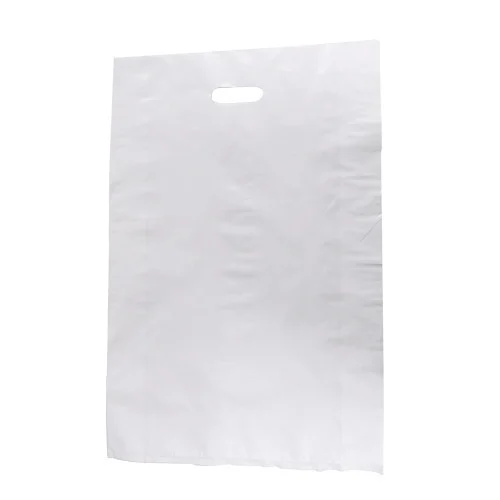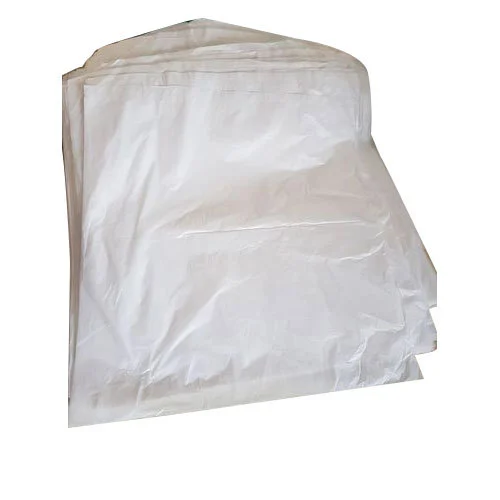What is HM Polybag?
“HM polybag, also known as high-density polyethylene (HDPE) polybag, is a type of plastic bag that is made from a high-density version of polyethylene. HDPE is a thermoplastic material that is derived from petroleum and is commonly used in the manufacturing of various plastic products, including bags, bottles, and containers. HM polybags are characterized by their high strength and durability, which makes them ideal for packaging and carrying heavy and bulky items. They are also resistant to moisture, chemicals, and punctures, which provides additional protection for the packaged items. HM polybags are commonly used in various industries, including retail, healthcare, food and beverage, and industrial manufacturing. HM polybags can be customized to meet specific requirements such as size, thickness, color, and printing. They are also available in various forms such as flat bags, gusseted bags, and resealable bags with different closure options such as zip-lock or drawstring. Overall, HM polybags offer several benefits, including strength, durability, and resistance to moisture and punctures, which make them a popular choice for packaging applications. However, it is important to dispose of HM polybags properly to minimize their environmental impact.”
History of HM Polybag in Brief Below:
The history of high-density polyethylene (HDPE) and HM polybags can be traced back to the 1950s. During this time, scientists at the Phillips Petroleum Company in the United States discovered a new process for polymerizing ethylene gas at high pressures and temperatures. This new process resulted in a new type of polyethylene that was denser and more rigid than the low-density polyethylene (LDPE) that had been used previously to make plastic bags.
In the following years, HDPE started to gain popularity as a material for various applications, including packaging. By the 1960s, HDPE had become a popular alternative to LDPE for making plastic bags due to its increased strength and durability. HDPE bags were more resistant to tearing, puncturing, and stretching than LDPE bags, which made them ideal for packaging heavy or sharp objects.
The popularity of HDPE bags continued to grow in the following decades as more industries recognized the benefits of using them for packaging. Today, HDPE bags are widely used in various industries, including retail, healthcare, food and beverage, and industrial manufacturing.
In recent years, there has been a growing concern about the environmental impact of plastic bags, including HDPE bags. As a result, efforts are being made to develop more sustainable alternatives to traditional plastic bags, including biodegradable and compostable bags made from plant-based materials.
Making of HM Polybag in Brief Below:
LDPE polybags are made through a process called extrusion. Here are the basic steps involved in the making of LDPE polybags:
Resin Preparation: The first step in making HM polybags is to prepare the resin. HDPE resin is typically produced by polymerization of ethylene gas under high pressure and temperature. The resin is then melted and extruded into pellets or granules for further processing.
Extrusion: The HDPE resin is then melted and extruded through a die to form a continuous tube of molten plastic. The diameter of the tube can be varied depending on the desired size of the polybag.
Cutting and sealing: The extruded tube is then cut into lengths and sealed at one end using a heat-sealing process. The heat-sealing process involves applying heat and pressure to the plastic to melt and fuse the edges together.
Printing: If required, the polybag can be printed with custom designs, logos, or branding using a variety of printing methods, including flexography, rotogravure, or digital printing.
Finishing: The finished polybags are then folded, stacked, and packaged for shipping.
HM Polybag Benefits
HM polybags offer several benefits, including:
High strength and durability – HM polybags are made from high-density polyethylene (HDPE), which makes them more rigid and stronger than low-density polyethylene (LDPE) bags. They are less prone to tearing, puncturing, and stretching, which makes them ideal for packaging heavy or sharp objects.
Resistance to moisture and punctures – HDPE is a water-resistant material, which makes HM polybags ideal for packaging products that are sensitive to moisture. They are also resistant to punctures, which provides additional protection to the packaged items.
Customization options – HM polybags can be customized to meet specific requirements such as size, thickness, color, and printing. They are available in various forms such as flat bags, gusseted bags, and resealable bags with different closure options such as zip-lock or drawstring.
Cost-effective – HM polybags are a cost-effective packaging solution compared to other packaging materials such as paper, cardboard, or metal. They are lightweight, easy to manufacture, and require less energy to produce and transport.
Versatility – HM polybags can be used in various industries, including retail, healthcare, food and beverage, and industrial manufacturing. They are suitable for packaging a wide range of products, from clothing and accessories to food items and industrial goods.


Specifications:
| Material : | HM polybags are made from high-density polyethylene (HDPE) resin. |
| Size : | The size of the polybag can be customized based on the intended use. HM polybags are available in various sizes, ranging from small bags used for packing snacks or accessories to larger bags used for packaging industrial goods. |
| Thickness: | HM polybags are available in various thicknesses, ranging from 20 microns to 200 microns. The thickness of the bag can be customized based on the weight and size of the packaged item. |
| Color : | HM polybags are available in different colors, including transparent, white, black, blue, green, and red. Custom colors can also be produced depending on the specific requirements. |
| Printing : | HM polybags can be printed with custom designs, logos, or branding using a variety of printing methods, including flexography, rotogravure, or digital printing. |
| Closure options: | HM polybags can be sealed using different closure options such as heat sealing, zip-lock, drawstring, or adhesive tape. |
| Surface finish: | HM polybags can be produced with different surface finishes such as matte, glossy, or embossed. |